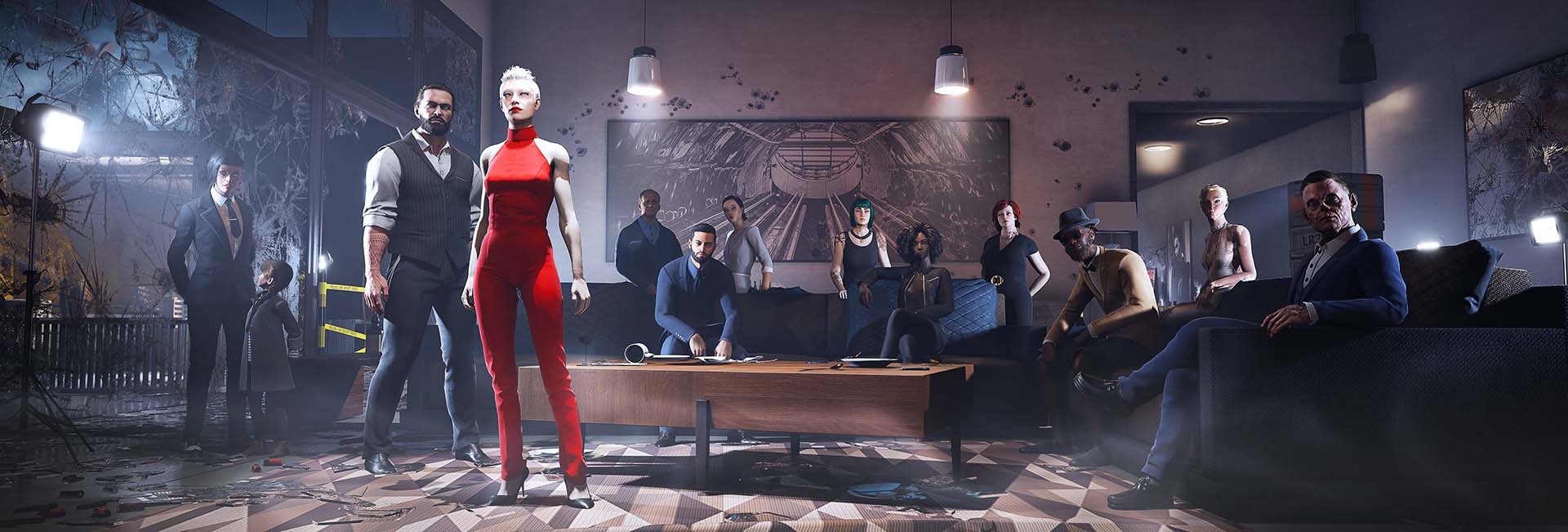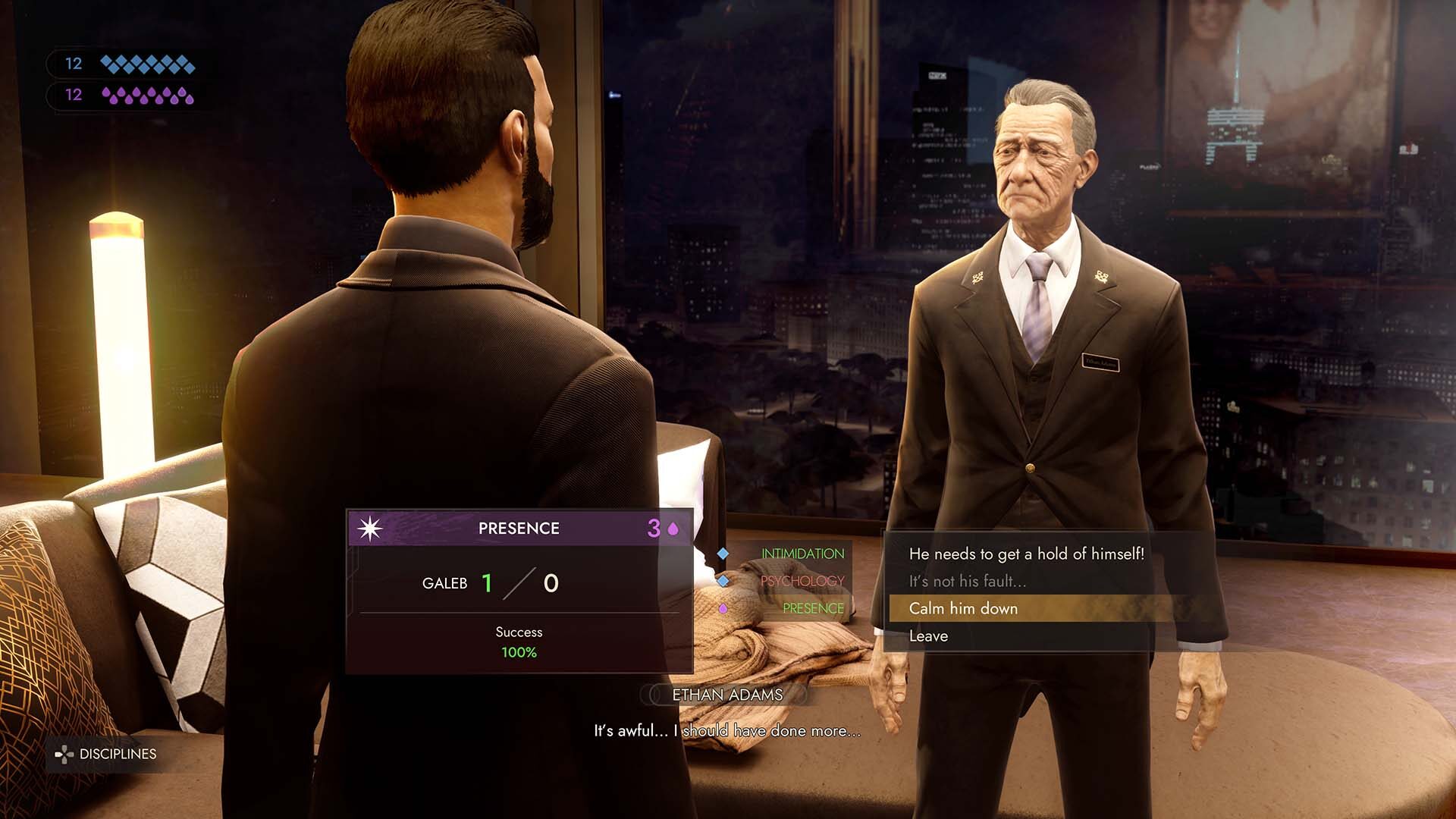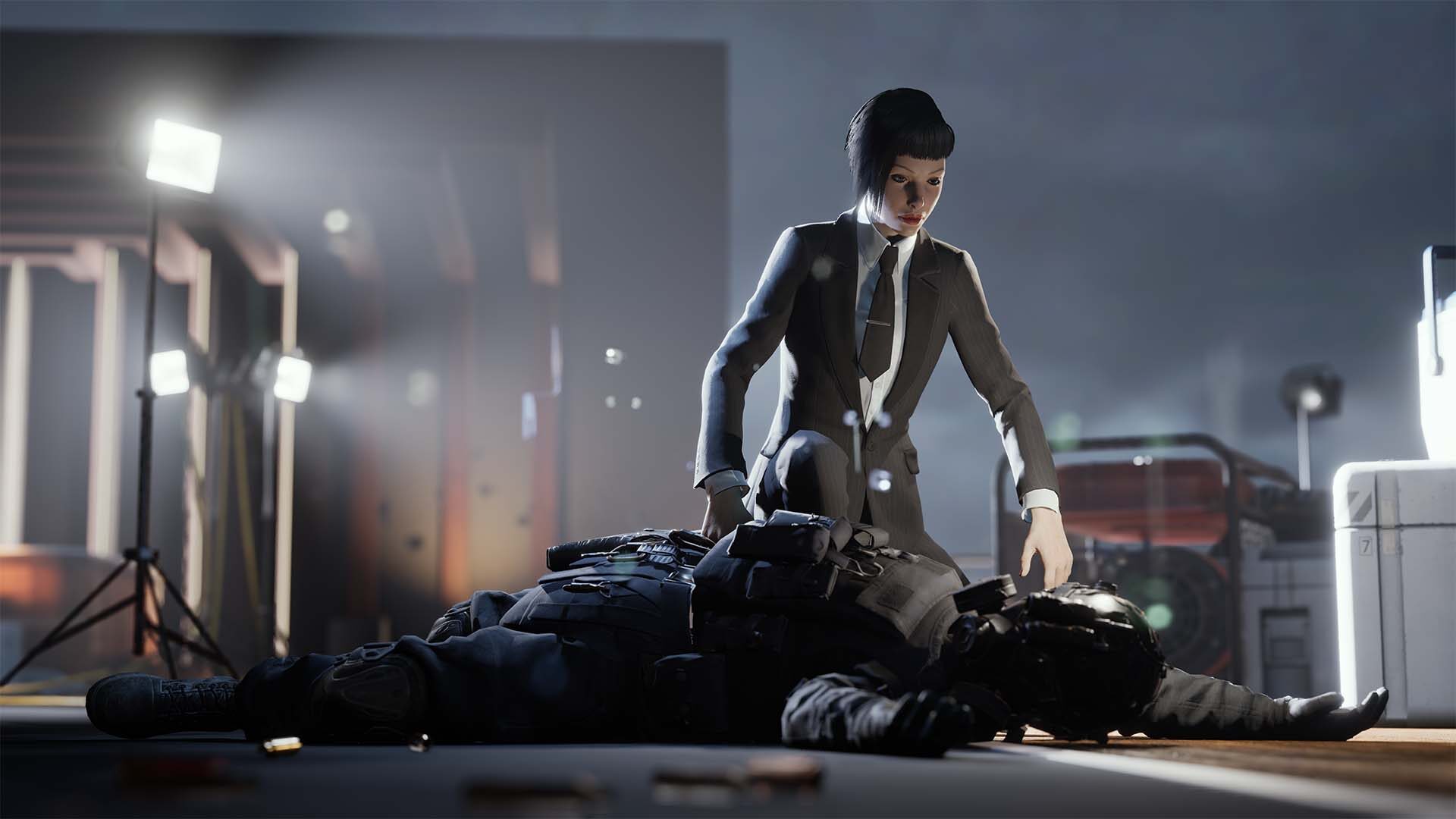As someone who has never played or in any way interacted with the Vampire: The Masquerade series, starting Swansong made me feel like someone who arrived late to a party that was already winding down. Maybe a more thematically relevant metaphor is a newly embraced childe who barely even preyed on his first vessel before facing the prospect of my impending final death. If you feel confused by that last sentence but can still piece together some semblance of meaning based on context, then you know exactly how I felt when I booted up Swansong for the first time.
The vampires of the Boston camarilla are already in crisis mode when Swansong opens. The Prince of Boston has called a Code Red—meaning the world of vampires is at risk of total exposure—and gathered her subjects in their secret headquarters to find out who is attacking vampires and why. Players take on the role of three different characters throughout the course of the game—rising star Emem, loyal elder Galeb, and tortured seer Leysha—and must uncover the conspiracy that threatens not only the newly established blood trade in the greater Boston area, but the unlives of all the vampires in the court.
Right off the bat (and no, you can’t turn into a bat), Swansong developer Big Bad Wolf Studio does a fine job making you sympathize for what are normally considered “evil” creatures without sacrificing what makes vampires so terrifying. However, feeling sympathetic towards any of the vampiric characters in Swansong does require turning a blind eye. Seeing an entire group of people trying to prevent the total extinction of their species does tend to make you want to root for them—until you remember that the entire impetus for the game’s narrative hinges on them creating a new business arrangement for human trafficking.

On the one hand, I don’t think characters need to be perfect angels for an audience to be able to sympathize with them, or at least find them compelling. On the other hand, it’s hard to feel much for a creature that’s fine with kidnapping and feeding on people. Swansong really does want you to feel for the characters, what with Leysha’s struggle with mental health and estrangement from her daughter, or Emem’s strained relationship with her own sire and conflicted feelings towards the Prince. There is a truly interesting throughline about legacy, conservatism, and the sins of the elders in Swansong, though depending on the choices you make, your results may vary in whether those themes reach a satisfactory resolution.
Thankfully, having sympathy for demonic creatures isn’t the main motivation for seeing the story to its conclusion. Swansong has a strong sense of worldbuilding, thanks in part to the decades of Vampire: The Masquerade lore, but also because of its slick art design. Its central conspiracy also draws from the World of Darkness that should satisfy the initiated while also encouraging newcomers just enough to want to follow the threads and see where they lead. Given Big Bad Wolf Studio has billed Swansong as a “narrative RPG,” you will be doing a lot of searching for clues and talking to NPCs, so story and environmental art design are pretty important. However, if you look too closely, the seams start to come apart, especially in the environmental details. There’s one level where you can find a character watching a “classic movie,” except that the “movie” he’s watching is literally just a still frame. But if you squint enough that the details become fuzzy, Swansong’s world is evocative enough to get its points across.
Unfortunately, one area that really breaks the immersion is in Swansong’s character animations and lip syncing. For a game with such a large focus on dialogue, Swansong’s stiff and awkward facial animations should have gotten much more care. Eyes regularly bug out in comical ways, almost as if to make up for the lack of emotion portrayed through body language. In another game, it might be easier to overlook these blemishes, but for a narrative-driven title, these issues dampen the entire experience and cheapens its more dramatic moments.
One place where Swansong throws the uninitiated into the deep end is with the game’s RPG mechanics, which feel like they’re ripped straight from the tabletop game (as far as I understand Vampire: The Masquerade’s rules). Each character has their own Disciplines, Skills, and Attributes that determine what actions they can take per level, and the experience points you can spend to level up each are shared between the three categories.

While the game’s menus do provide some information on how each of these categories impacts one another, it’s still way too easy, especially early on, for the player to misspend the meager amount of experience points they get at the end of each level and dig themselves a hole that they can’t get out of. There’s no traditional combat in Swansong, but almost every action you take will require you to engage with the game’s RPG systems. You will also need to occasionally suck some blood to keep your willpower up and your bloodlust down, lest you lose control of your character, but that’s as easy as finding a safe zone and holding down a button.
Every other action—like deducing answers from clues, cracking safes, and pickpocketing—requires you to have put a certain amount of points into the right categories, as do a lot of the game’s important dialogue choices. This means that, depending on how you spec out each character, your experience can greatly vary from someone else’s. When it clicks, Swansong can be a fun and strategic experience where you feel like your choices do matter. But spread your points too thin across too many different categories and you will find it impossible to unlock certain story beats or get your desired outcome. This does encourage multiple playthroughs, but it can also be incredibly frustrating when you feel like you have to go with the worst option because you decided to build your character a certain way.
Swansong undoubtedly has issues with presentation and gameplay balance, and its demonic protagonists aren’t going to charm everyone, but there’s still something very compelling about the story of bloodsucking monsters on the backfoot, trying to survive. In that regard, your choices really do feel like they matter, and I was intrigued enough to see where mine took me. But there are too many things about Swansong that make it feel like just another tie-in to a larger franchise, especially in the finer details. There’s no better example of Big Bad Wolf skimping than in the ending. Without spoiling anything, I will just say that my choices had profound consequences for the vampires of the Boston camarilla, but I didn’t get to actually see any of that. The epic conclusion was merely described in a few sentences of white text on a black background. Just as quickly as I was whisked into Swansong’s dark fantasies, I was pushed out. It was like a final death when I had just been embraced.

Images: Nacon
|
★★★☆☆
Vampire: The Masquerade — Swansong can be a compelling experience, especially for those who are already familiar with the World of Darkness. Its RPG mechanics lend depth to an otherwise standard narrative adventure, as long as you can grasp their meaning. But wonky gameplay balance and even wonkier facial animations, not to mention some of the more overwritten and under-earned emotional beats, can make falling in love with its vampires harder to swallow than a mouthful of blood. |
Developer Big Bad Wolf Studio Publisher Nacon ESRB M - Mature Release Date 05.19.22 |
| Vampire: The Masquerade — Swansong is available on Xbox Series X/S, PlayStation 5, Xbox One, PlayStation 4, and PC. Primary version played was for PC. Product was provided by Nacon for the benefit of this coverage. EGM reviews on a scale of one to five stars. | |

Michael Goroff has written and edited for EGM since 2017. You can follow him on Twitter @gogogoroff.